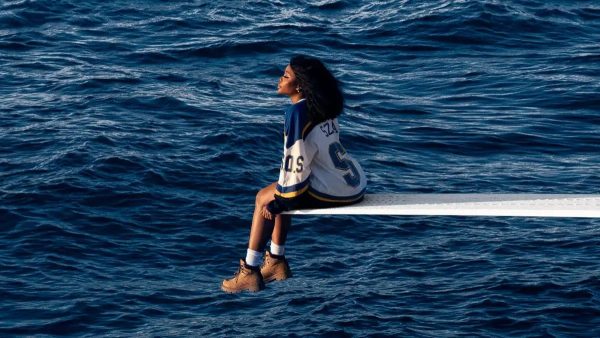Doing the Most with the Least
The United States Coast Guard (USCG) is the unsung hero of the US armed forces. While it doesn’t have the scale of the US Navy, the prestige of the US Army, or the infamy of the US Air Force, the USCG performs the largest number of protective measures for the US mainland and its citizens of any branch of the US armed services. In spite of this, no other branch of the military has been hit harder by budget cuts and sequestration than the USCG in the last decade.
A major source of budget trouble for the USCG comes from its awkward position in the US budget. As one of the five services, it must adhere to Department of Defense (DoD) policy requirements, which increases its costs due to the numerous redundancies that must be incorporated into its programs to make sure the military branches can remain functional in a time of crisis. However, the USCG isn’t actually a member of the DoD, and instead belongs to the Department of Homeland Security (DHS). This is problematic, because in spite of having to meet the requirements of the DoD, the USCG does not have access to its massive budget. Instead, the USCG is left to scavenge what it can from the $40.6 billion dollar budget of DHS.
Recently, Trump and the Republican administration have promised to raise the number of ships in US Navy’s active fleet to 355, so talk of reallocating resources to maintain a functioning USCG fleet has been sparse. This is troubling, because currently the US Navy has a budget of $379.8 billion with a shipbuilding budget of $14.3 billion, while the USCG has a budget of just $9.1 billion with a shipbuilding budget of just $743 million. If the US Navy was as active as the USCG in daily operations to protect our coasts, this would perhaps justify failing to address the funding problem. But the USCG is significantly more active in conducting protective measures, so the lack of a sufficiently large budget can hinder its ability to execute its mission.
The current USCG commandant, Admiral Paul Zukunft, said in an interview, “We are depleted of resources…when you add both transnational criminal organizations, plus the Arctic…we need to move from being a bantam-weight fighter to being a welter-weight fighter,” referring to two different weight classes in boxing (the former being the lighter of the two). The mission requirements for the USCG, when compared to its budget, are incredibly disproportionate. The USCG is currently tasked with defending over 100,000 miles of US coastline and inland waterways. The USCG has the additional task of safeguarding the US’s Enforced Economic Zone (EEZ), encompassing 4.5 million square miles of ocean, extending from the Arctic Circle to the South Pacific and from the Caribbean to Guam in the West Pacific. This immense area is the largest EEZ in the world and covers nine time zones.
The reason the USCG has to have a presence in the vast area is because most illegal drugs, mainly cocaine, come into the US through maritime smuggling routes. A cornerstone of USCG’s drug interdiction campaign lies on the USCG Legend-class National Security Cutter. While the Legend-class is a significant new addition to the USCG’s fleet, their budget simply isn’t high enough to maintain enough ships for their mission requirements. The inadequate budget is a key problem in the USCG’s force structure shortcomings; particularly acute is the USCG’s shortage of “high-endurance” cutters. During the height of US drug interdiction efforts, the USCG was maintaining 12 Hamilton-class high-endurance cutters; today that number has dropped to only 5 Hamilton-class cutters. This is because the cost to maintain these ships, not to mention the costs to cover maintaining other ships and build the Legend-class cutter, is an unsustainable burden on the USCG’s budget.
The most glaring issue with the current plan for the USCG force structure is that it calls for the replacement of the Hamilton-class cutters with just 9 Legend-class cutters. When the Hamilton-class was first commissioned in the 1960’s, the maritime security landscape was far different; the missions and requirements have changed dramatically with the DoD focusing mainly overseas. Admiral Zukunft recently stated, “If you look at the DoD’s statement of key priorities, they are not focused on the Western Hemisphere.” A major blow to the USCG has been the retirement of the US Navy Perry-class frigate, which played a crucial role in assisting the USCG in drug interdiction by supplementing the USCG’s force structure deficiency. Admiral Zukunft went on to say, ”On the best of days, you have three Coast Guard ships in the Caribbean. That is your entire force to deal with threats in the region.” Another major cause of the small number of ships in the region is that because the DoD is focused overseas, USCG ships often get ordered to assist the Navy in policing areas around the Mediterranean and Persian Gulf. This is likely due to the fact that the USCG is a maritime police force and is better suited than the Navy for both search and seizure operations and the capture of wanted persons in international waters.
Besides drug interdiction along the US’s coasts, the USCG’s other Western Hemisphere task is the Arctic. In recent years, traffic from cruise ships and commercial vessels increased through the Arctic Circle due to global warming, making more open water available, which in turn is taking a toll on the USCG’s ability to work in such regions with their current force structure. The elephant in the room when it comes to policing the Arctic is the dismal state of the US’s only remaining heavy icebreaker, the USS Polar Star. The heavy icebreaker is now entering its 40th year in service and the USCG has resorted to retiring her sister ship, the USS Polar Sea, for use as a spare parts source to keep USS Polar Star running. The Coast Guard is expected to be receiving a new heavy icebreaker, but not until the mid 2020’s, which is simply too far away for the Polar Star to survive. The primary problem is that the estimated cost of repairs to keep the USS Polar Star running until 2020 (approximately $600 billion), is far beyond what the USCG is able to afford.
The USCG’s other programs such as the Helicopter Interdiction Tactical Squadron (HITRON) and the Maritime Security Response Team (MSRT) have also felt the brunt of budget cuts and inadequate funding. The MSRT is having to reduce their operational theatre using their own ships, working in the Mediterranean in cooperation with the Navy, and instead rely solely on the Navy for transport and staging areas. HITRON is being forced to scale back its operations from their base in Jacksonville due to high running costs for their helicopters and is relying mainly on the cutters in the area to launch missions from. The most glaring example of the USCG’s small budget doesn’t involve their ships and helicopters, but rather, their bases on the US coasts. After Hurricane Sandy, many USCG bases were heavily damaged, but didn’t have a large enough budget to hire contractors to fix them. As a result, USCG members had to fix their own roofs when not deployed on other missions.
Luckily for the Coast Guard, some people in Washington have a sense of how desperately the Coast Guard needs money and voted against Trump’s plan to cut the USCG’s budget down to $7.2 billion. Had Trump succeeded, the USCG would be left ineffective. Trump’s desire to cut USCG funding is one of the most peculiar things he has proposed, due to the fact that he has persistently insisted on better border security between the US and Mexico. However, as the previous evidence might suggest, he seems to have forgotten that the US is not landlocked and indeed has water on either side of it, requiring a maritime police force that has enough funding to properly protect those areas. As previously stated, his proposed budget cut would put the Coast Guard in a position where they simply couldn’t function and would have to forfeit some tasks in order to focus adequate attention to police the most critical American coastal waters.
Hopefully the Coast Guard will soon receive the funding it so desperately requires, or at the very least receive allocated ships with which it can enforce laws in American waters, and protect the US from hostile and illegal acts. If the Coast Guard doesn’t receive the necessary funding, their motto, “Semper Paratus” meaning “Always Ready,” could be hard to fulfill in the future. Nevertheless, the USCG always manages to do the most with the least, scraping by with a budget already far too small.
Sources:
Opinion: Doing the Most with the Least; the Coast Guard Dilemma
Coast Guard Chief Papp: Service ‘Shouldn’t Bear Full Brunt’ of New Icebreaker Cost
https://en.wikipedia.org/wiki/United_States_Department_of_Homeland_Security

Hi my name is Kevin Lentz, I am in 10th Grade and am 15 years old. I am a writer for the newspaper and like to write about STEM topics. My favorite font...










